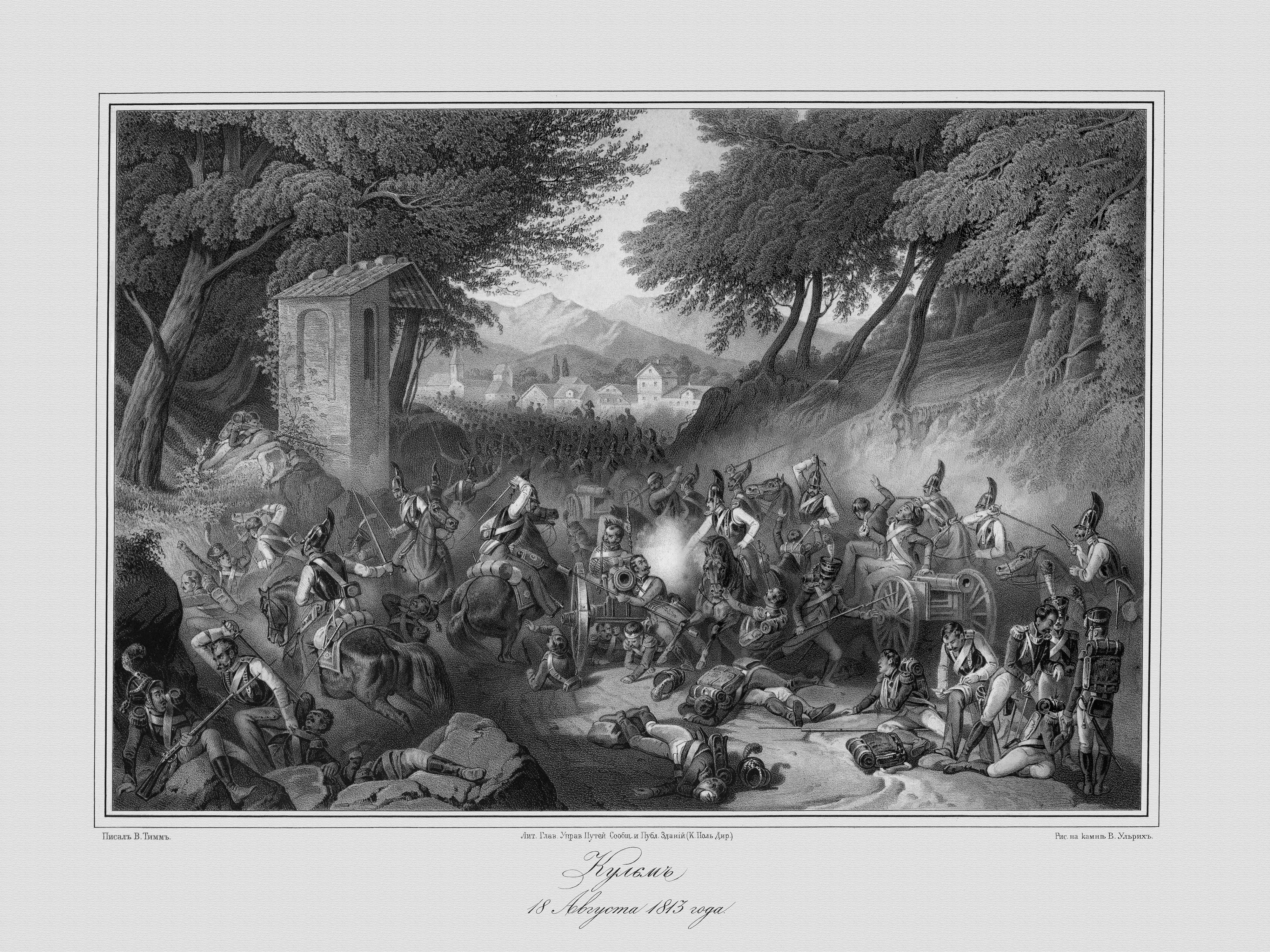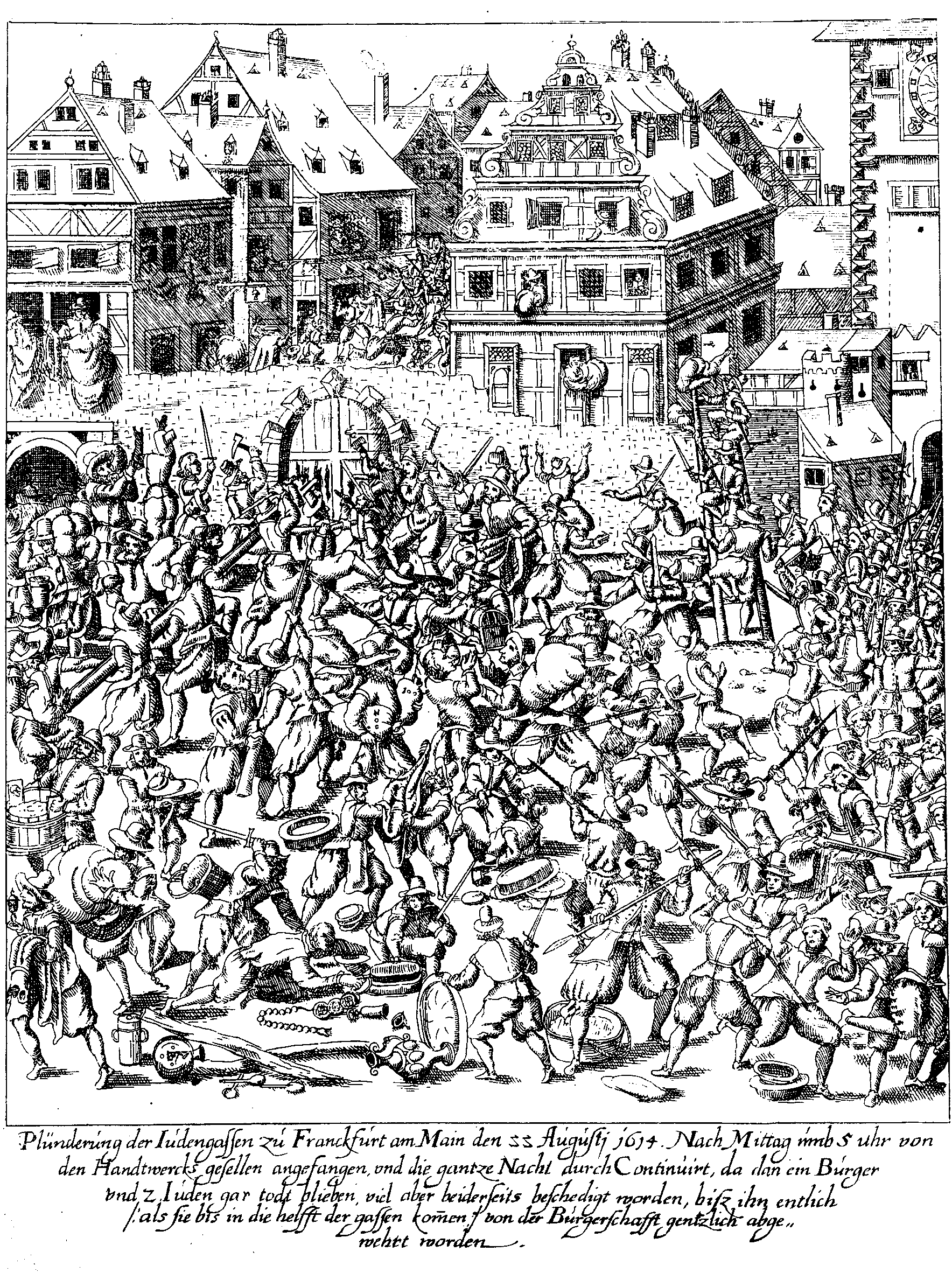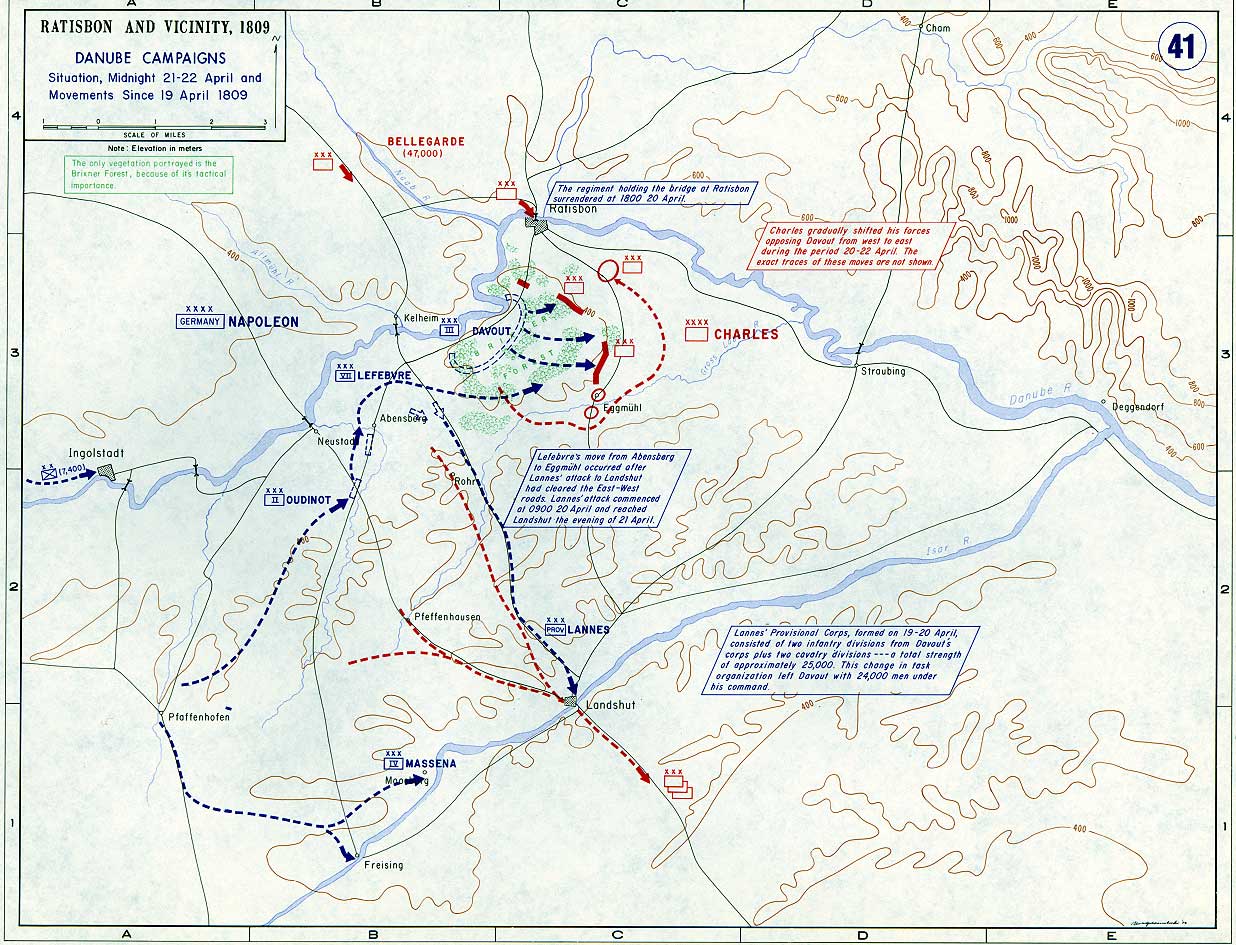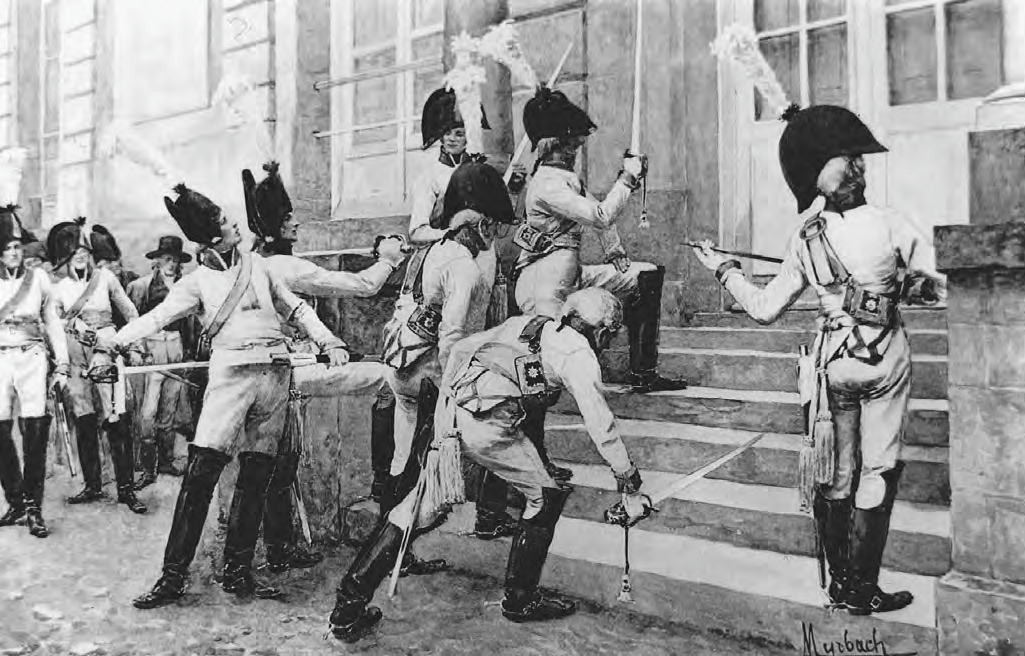|
Dominique-Joseph René Vandamme
General Dominique-Joseph René Vandamme, Count of Unseburg (; 5 November 1770, in Cassel, Nord – 15 July 1830) was a French military officer, who fought in the Napoleonic Wars. He was a dedicated career soldier with a reputation as an excellent division and corps commander. However, he had a nasty disposition that alienated his colleagues, and would publicly criticize Napoleon, who never appointed him marshal. Biography Vandamme enlisted in the army in 1786 and rapidly rose through the ranks. At the outbreak of the French Revolutionary Wars in 1793 he was a Brigadier General. He served in this rank in the campaigns of 1794 in the Low Countries, 1795 on the Rhine and 1796 in Germany. He was court-martialled for looting and suspended. Reinstated, he fought at the First Battle of Stockach on 25 March 1799, but disagreement with General Jean Moreau led to his being sent to occupation duties in Holland. At the Battle of Austerlitz in 1805, he led his division, alongside Gen. St ... [...More Info...] [...Related Items...] OR: [Wikipedia] [Google] [Baidu] |
Cassel, Nord
Cassel (; ) is a Communes of France, commune in the Nord (French department), Nord Departments of France, department in northern France. Built on a prominent hill overlooking French Flanders, the town has existed since Roman Empire, Roman times. It was developed by the Romans into an important urban centre and was the focus of a network of roads, which are still in use today, that converge on the hill. After the fall of the Roman Empire, Cassel became an important fortified stronghold for the rulers of Flanders which was repeatedly fought over before finally being annexed to France in the 17th century. It was the headquarters of Marshal Ferdinand Foch during part of the First World War. In 1940, during the Battle of France, German invasion of France, Cassel was the scene of a fierce three-day battle between British forces (led in part by Major Ronald Cartland, Member of Parliament (United Kingdom), MP) and German forces which resulted in much of the town being destroyed. The town ... [...More Info...] [...Related Items...] OR: [Wikipedia] [Google] [Baidu] |
Jean Victor Marie Moreau
Jean Victor Marie Moreau (, 14 February 1763 – 2 September 1813) was a French general who helped Napoleon Bonaparte rise to power, but later became his chief military and political rival and was banished to the United States. He is among the foremost French generals in military history. Biography Rise to fame Moreau was born at Morlaix in Brittany. His father was a successful lawyer, and instead of allowing Moreau to enter the army, as he attempted to do, insisted on Moreau studying law at the University of Rennes. Young Moreau showed no inclination for law, but reveled in the freedom of student life. Instead of taking his degree, he continued to live with the students as their hero and leader, and formed them into a sort of army, which he commanded as their provost. When 1789 came, he commanded the students in the daily affrays which took place at Rennes between the young noblesse and the populace. In 1791, Moreau was elected a lieutenant colonel of the volunteers of Ill ... [...More Info...] [...Related Items...] OR: [Wikipedia] [Google] [Baidu] |
Battle Of Kulm
The Battle of Kulm was fought near the town Kulm () and the village Přestanov in northern Bohemia. It was fought on 29–30 August 1813, during the War of the Sixth Coalition. A French corps under General Dominique Vandamme attacked Alexander Osterman-Tolstoy's Russian corps on 29 August. The next day, Friedrich von Kleist's Prussian corps hit Vandamme in the rear while Russian and Austrian reinforcements attacked the French front and left. Vandamme was defeated with the loss of between 13,000 and 25,000 men and 82 guns. Background Following the French victory at Dresden, Vandamme pursued the retreating allies. Napoleon sent Marshals Gouvion Saint Cyr and Auguste Marmont to support Vandamme's corps. With Vandamme in advance, Saint Cyr's and Marmont's corps brought up the rear. Vandamme caught up with Alexander Ivanovich Ostermann-Tolstoy's forces near the town of Kulm, eight kilometres northwest of Aussig (Ústí nad Labem, now in the Czech Republic). Battle On ... [...More Info...] [...Related Items...] OR: [Wikipedia] [Google] [Baidu] |
Battle Of Dresden
The Battle of Dresden (26–27 August 1813) was a major engagement of the Napoleonic Wars. The battle took place around the city of Dresden in modern-day Germany. With the recent addition of Austria, the Sixth Coalition felt emboldened in their quest to expel the French from Central Europe. Despite being heavily outnumbered, French forces under Napoleon scored a victory against the Army of Bohemia led by Generalissimo Karl von Schwarzenberg. However, Napoleon's victory did not lead to the collapse of the coalition, and the weather and the uncommitted Russian reserves who formed an effective rear-guard precluded a major pursuit. Three days after the battle, the Coalition surrounded and destroyed a French corps advancing into their line of withdrawal at the Battle of Kulm. Prelude On 16 August, Napoleon had sent Marshal Saint-Cyr's corps to fortify and hold Dresden in order to hinder coalition movements and to serve as a possible base for his own manoeuvres. He planned to ... [...More Info...] [...Related Items...] OR: [Wikipedia] [Google] [Baidu] |
Army Of Bohemia
The Army of Bohemia was a coalition field army during the War of the Sixth Coalition in 1813–1814. It was under the command of the Austrian field marshal Karl Philipp zu Schwarzenberg. In addition to commanding the field army, Schwarzenberg was also the supreme allied commander and the commander of the Austrian army in Bohemia. The Army of Bohemia was formed by placing the Austrian, Russian and Prussian corps in Bohemia under a single command. The Russian and Prussian corps were commanded by Michael Andreas Barclay de Tolly, who was subordinate to Schwarzenberg. Schwarzenberg's command was designated the Army of Bohemia on 1 May 1813. His chief of staff was Joseph Radetzky and all three coalition sovereigns—Emperor Francis I of Austria, Tsar Alexander I of Russia and King Frederick William III of Prussia—stayed at his headquarters. Including reserves and guards, the Army of Bohemia contained 127,435 Austrians, 78,200 Russians and 44,907 Prussians., also gives a total of 220,0 ... [...More Info...] [...Related Items...] OR: [Wikipedia] [Google] [Baidu] |
Looting
Looting is the act of stealing, or the taking of goods by force, typically in the midst of a military, political, or other social crisis, such as war, natural disasters (where law and civil enforcement are temporarily ineffective), or rioting. The proceeds of all these activities can be described as booty, loot, plunder, spoils, or pillage. Looting by a victorious army during war has been a common practice throughout recorded history. In the wake of the Napoleonic Wars and particularly after World War II, norms against wartime plunder became widely accepted. In modern armed conflicts, looting is prohibited by international law, and constitutes a war crime.Rule 52. Pillage is prohibited. ''Customary IHL Database'', International Committee of the Red Cross (ICRC)/Cambridge University Press. |
Battle Of Eckmühl
The Battle of Eckmühl fought on 22 April 1809, was the turning point of the 1809 Campaign, also known as the War of the Fifth Coalition. Napoleon I had been unprepared for the start of hostilities on 10 April 1809, by the Austrians under Archduke Charles of Austria and for the first time since assuming the French Imperial Crown had been forced to give up the strategic initiative to an opponent. Thanks to the dogged defense waged by the III Corps, commanded by Marshal Davout, and the Bavarian VII Corps, commanded by Marshal Lefebvre, Napoleon was able to defeat the principal Austrian army and wrest the strategic initiative for the remainder of the war. Strategic situation Operating over a fifty-mile front, from Regensburg (Ratisbon to the French) to Pfaffenhofen, marked by stretches of rugged, wooded terrain, neither the French nor the Austrians had developed adequate intelligence about their opponent's strength, dispositions, or intentions. Assuming that the bulk of ... [...More Info...] [...Related Items...] OR: [Wikipedia] [Google] [Baidu] |
Battle Of Landshut (1809)
The Battle of Landshut took place on 21 April 1809 between the French, Württembergers (VIII Corps) and Bavarians (VII Corps) under Napoleon which numbered about 77,000 strong, and 36,000 Austrians under the General Johann von Hiller. The Austrians, though outnumbered, fought hard until Napoleon arrived, when the battle subsequently became a clear French victory. Prelude There were in fact two engagements at Landshut. The first occurred on 16 April when Hiller pushed a defending Bavarian division out of the town. Five days later, after the French victory at Abensberg, the left wing of the Austrian army (36,000 men) withdrew on Landshut (this force was once more led by Hiller). Napoleon believed that this was the main Austrian army and ordered Lannes to pursue the enemy. Lannes’s troops caught up with Hiller on the twenty-first. Hiller had decided to defend Landshut to allow his baggage train to withdraw. At Landshut the Isar river was spanned by two bridges with a small i ... [...More Info...] [...Related Items...] OR: [Wikipedia] [Google] [Baidu] |
Battle Of Abensberg
The Battle of Abensberg took place on 20 April 1809 between a Franco-German force under the command of Emperor Napoleon I of France and a reinforced Austrian corps led by Feldmarschall-Leutnant Archduke Louis of Austria. As the day wore on, Feldmarschall-Leutnant Johann von Hiller arrived with reinforcements to take command of the three corps that formed the Austrian left wing. The action ended in a complete Franco-German victory. The battlefield was southeast of Abensberg and included clashes at Offenstetten, Biburg- Siegenburg, Rohr in Niederbayern, and Rottenburg an der Laaber. On the same day, the French garrison of Regensburg capitulated. After Marshal Louis-Nicolas Davout's hard-fought victory at Battle of Teugen-Hausen the previous day, Napoleon determined to break through the Austrian defenses behind the Abens River. The emperor assembled a provisional corps consisting of part of Davout's corps plus cavalry and gave Marshal Jean Lannes command over it. Napoleon ... [...More Info...] [...Related Items...] OR: [Wikipedia] [Google] [Baidu] |
Württemberg
Württemberg ( ; ) is a historical German territory roughly corresponding to the cultural and linguistic region of Swabia. The main town of the region is Stuttgart. Together with Baden and Province of Hohenzollern, Hohenzollern, two other historical territories, Württemberg now forms the Federal State of Baden-Württemberg. Württemberg was formerly also spelled Würtemberg and Wirtemberg Castle, Wirtemberg. History Originally part of the old Duchy of Swabia, its history can be summarized in the following periods: *County of Württemberg (1083–1495) *Duchy of Württemberg (1495–1803) *Electorate of Württemberg (1803–1806) *Kingdom of Württemberg (1806–1918) *Free People's State of Württemberg (1918–1945) After World War II, it was split into Württemberg-Baden and Württemberg-Hohenzollern owing to the different Allied Occupation Zones in Germany, occupation zones of the United States and France. Finally, in 1952, it was integrated into Baden-Württemberg. Stutt ... [...More Info...] [...Related Items...] OR: [Wikipedia] [Google] [Baidu] |
War Of The Fourth Coalition
The War of the Fourth Coalition () was a war spanning 1806–1807 that saw a multinational coalition fight against Napoleon's First French Empire, French Empire, subsequently being defeated. The main coalition partners were Kingdom of Prussia, Prussia and Russian Empire, Russia with Electorate of Saxony, Saxony, Franco-Swedish War, Sweden, and United Kingdom of Great Britain and Ireland, Great Britain also contributing. Excluding Prussia, some members of the coalition had previously been fighting France as part of the War of the Third Coalition, Third Coalition, and there was no intervening period of general peace. On 9 October 1806, Prussia declared war on France and joined a renewed coalition, fearing the rise in French power after the defeat of Austrian Empire, Austria and establishment of the French-sponsored Confederation of the Rhine in addition to having learned of French plans to cede Prussian-desired Electorate of Hanover, Hanover to Britain in exchange for peace. Prussi ... [...More Info...] [...Related Items...] OR: [Wikipedia] [Google] [Baidu] |






